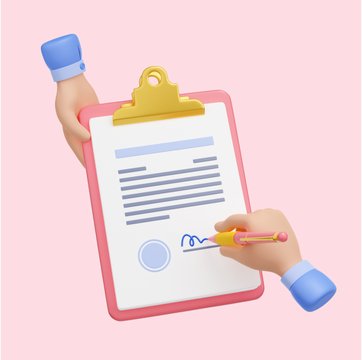How to Communicate Delays in Response with Customers

Table of contents
As a customer, one of the most important factors that dictates my experience with support is how quickly I get a response to my query.
Long wait times can be extremely frustrating for a customer and makes them feel undervalued.
But let’s be real, despite our best efforts, there are some situations where there is going to be a delay when responding to a customer’s query. It could be due to unexpected spikes in demand, technical issues, or any other unforeseen circumstance.
Now this can be a tricky situation, especially since it takes just a single negative experience for customers to switch brands and as many as 3 out of 4 customershate long waiting times.
So how do you navigate this?
The simplest thing to do is to be straightforward and communicate to customers that they can expect a delay in response and mention why it is so.
If you craft the right message, use the proper communication channels, and set clear expectations, you might just be able to avoid potential frustrations amongst customers.
Read on to know more about how you can create effective messages to communicate delays in response to your customers.
Table of Contents
- 10 Message Templates to Communicate Delays in Response with Customers
- 1. The friendly update
- 2. The apology note
- 3. The service delay acknowledgement
- 4. The service glitch update
- 5. The self-service option
- 6. The progress update
- 7. The proactive notification for known or expected delays
- 8. The out of office message
- 9. The extended response time notification
- 10. The schedule a call note
- How to Deal with Delays in Response
- Final Thoughts
10 Message Templates to Communicate Delays in Response with Customers
Here are some ways you can effectively notify customers when they need to expect a delay in response. Tailor these messages to suit your brand’s tone and voice.
Feel free to add in more elements such as links, contact details, or more to make the message more comprehensive. These templates can be used in emails, website banners, or as chatbot responses to notify customers.
1. The friendly update
A simple but effective way to let customers know that your responses will be delayed. The tone is friendly and assures the customer that their request is definitely a priority and they can expect a response soon enough.
Subject: We’re on It! Response Times May Be Slightly Longer
Hey [Customer Name], we are facing an unusually high volume of queries. Please expect a delay in response as all our agents are currently busy. Your experience is our top priority and we’ll make sure to get back to you within [Timeframe].
2. The apology note
Let customers know that you truly understand their frustration and express your empathy. Emphasize that you’re doing everything you can to respond as quickly as possible.
Subject: We apologize for the delay in responding to your inquiry
Hey [Customer Name], we’re extremely sorry about the delay in responding to your inquiry #[Inquiry Number]. Our team is currently handling a high volume of requests and we’re working diligently to address each one as quickly as possible.
Thank you for your patience and understanding during this busy period. We value your trust in us and are here to ensure your satisfaction.
3. The service delay acknowledgement
Acknowledge the importance of the customer’s query and show them that you are aware of the current situation. Explain that you will flag the request so that it can be handled on priority within a specific time frame.
Subject: Re: Your query regarding [Topic]
Hey [Customer Name], thank you for contacting us about [Topic]. We can see that this is an important issue and apologize for the delay in response. To address this as promptly as possible, we’ll go ahead and flag your request as ‘immediate priority’. Please expect a response within the next 2 hours.
4. The service glitch update
Sometimes, technical issues and disruptions can cause a delay in responding to customer requests. The best way to tackle this without impacting customer satisfaction is to send a notification to all customers that they should expect a delay in response due to service downtime.
Subject: We’re facing a temporary service interruption
Hey [Customer Name], please expect a temporary delay in all our responses due to an unexpected system disruption. Our team is working around the clock to restore full functionality as soon as possible.
We understand the importance of timely communication and sincerely apologize for the inconvenience. Your query will be addressed as soon as our systems are back to normal.
You Might Also Like: 13 Response Templates to Handle Angry Customers
5. The self-service option
If you think a customer’s query can be resolved without agent intervention, encourage them to explore a self-service option such as a knowledge base or FAQs for answers.
Subject: We are here to help!
Hey [Customer Name], we are experiencing a slight delay in responding to your query #[Inquiry Number]. Our agent should be able to assist you soon. But in the meantime, please feel free to go through our resources for an appropriate resolution of your query. You can access our knowledge base at [Knowledge Base Link].
6. The progress update
It’s always a good idea to notify customers about the progress with their registered complaint. Highlight the status of the complaint and mention a date by when the customer can expect a detailed response.
Subject: Update on your inquiry #[Inquiry Number]
Hey [Customer Name], we received your inquiry on [Topic]. All our agents are busy right now but rest assured, we’re working actively to solve your complaint. Please expect a response by [Timeframe]. To find out more about the status of your complaint, please visit [Link to Progress Update]
7. The proactive notification for known or expected delays
These are messages sent to customers to proactively notify them to expect a delay in response. Certain situations such as system maintenance may cause delayed responses and it is always better to communicate this to customers beforehand. This way customers know what to expect which in turn reduces frustration.
Subject: Important update: Expect delays in response until [Timeframe]
Hey there, our system is currently going through a scheduled downtime as part of our routine maintenance function. Please expect a delay in response to queries till our system is up and running. Apologies for the inconvenience. We’ll be back by [Mention Date and Time].
8. The out of office message
If you’re a customer success manager, you may deal with certain clients via your work email. In such cases, set up an auto-responder with an out-of-office message and alternative contact details so customers know what to do in case of an emergency.
Subject: Out of Office
Hey there
Please expect a delay in response as I’m out of office until [Date of Return]. In case of anything urgent, please contact [Name of Alternate Contact] at [Contact Details of Alternate Contact]. Otherwise, I will get back to you as soon as I return.
Best
[Your Name]
[Your Position]
9. The extended response time notification
Use this message to notify customers if there is going to be further delay in addressing their queries.
Subject: Important Notice: Response Delays Due to Ongoing Issues
We wanted to provide you with an update regarding your recent inquiry. Unfortunately, due to ongoing [Reason for Delay – e.g., system issues, high volume of inquiries, etc.], there will be further delays in our response time. We understand that timely communication is crucial, and we sincerely apologize for any inconvenience this may cause.
Thank you for your continued patience and understanding. We appreciate your trust and are committed to providing you with the support you need.
10. The schedule a call note
In rare cases, you may have to connect the customer to a specialist, especially if the complaint requires a more in-depth analysis.
Subject: Re: Your Inquiry Regarding [Topic] – Personalized Support Option
Hey [Customer Name], thank you for contacting us about [topic]. We understand your inquiry may require a more in-depth discussion.
Due to a high volume of inquiries, responding via email may take some time.
To provide you with the most efficient support, we would be happy to schedule a call with a specialist who can address your issue directly. Please reply to this email with your preferred timeframe, and we will get in touch to confirm a call slot.
How to Deal with Delays in Response
Dealing with delays in response can be a challenging experience, both for businesses and customers. It is important to handle these situations carefully without negatively impacting the customer. Here are some strategies to handle customers whenever responses are delayed.
- Set expectations early: Be proactive about notifying customers about potential delays either through website, email, or via a chatbot.
- Set up automated responses: Use auto-responders to acknowledge receipt of a customer’s request and to notify them about next steps.
- Provide updates: Send regular updates to customers about the progress of their complaints. Keeping them in the loop reduces anxiety.
- Prioritize urgent requests: Use a system to categorize priority requests and try to address them as quickly as possible.
- Monitor response times: Track metrics such as first response time, average handling time, and ticket volume to identify bottlenecks. Use these insights to manage team workload and take proactive measures to avoid delayed responses.
Final Thoughts
Effectively communicating delays in response with your customers is super important to foster trust and satisfaction. Sending transparent and timely updates shows customers that you are actively trying to resolve their issues and that you value their experience.
In some cases, it is a good idea to offer alternative solutions and prioritize urgent requests, especially for certain types of customers. It goes a long way to demonstrate your commitment to robust customer service.
You can use the templates we’ve listed above to navigate delays smoothly and build a positive relationship with your customers.
Remember, how you handle delays can significantly impact customer loyalty and perception of your brand.

































